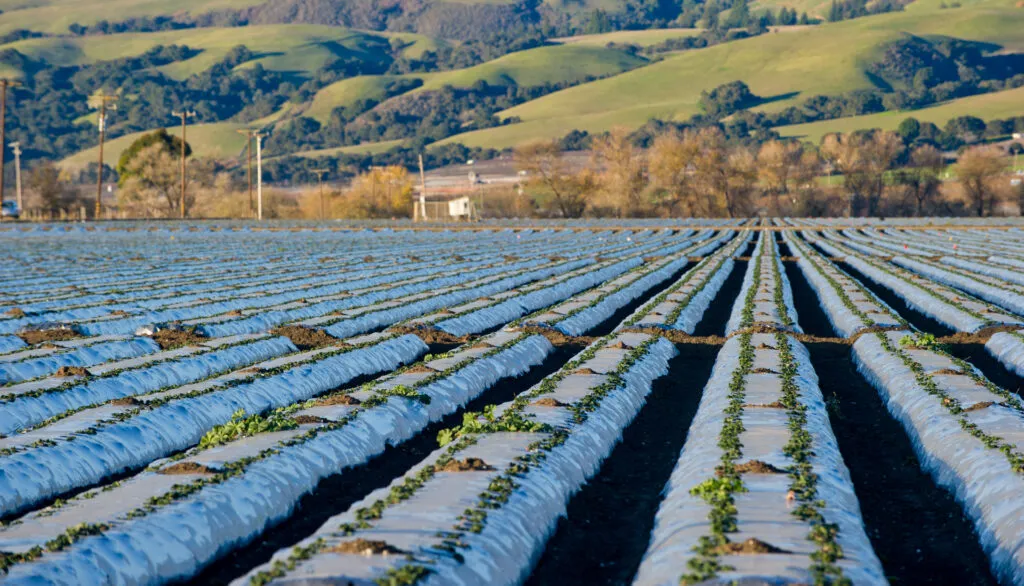In the heart of the Pacific Northwest (PNW), a region renowned for its lush farmlands and burgeoning aquaculture industry, a silent invader is making its way into our food systems and ecosystems: microplastics. A recent study published in the journal ‘Frontiers in Sustainable Food Systems’ (translated as ‘Frontiers in Sustainable Food Systems’) sheds light on the pervasive use of plastics in agriculture and aquaculture, and the urgent need for sustainable solutions.
Plasticulture, the use of plastic in food production, has revolutionized farming and aquaculture since the mid-20th century. From plastic films that protect crops to nets that keep fish safe, these materials have boosted yields and efficiency. However, they have also left an indelible mark on the environment, with microplastics (MPs) and chemicals leaching into our soils and waters.
Susanne M. Brander, a leading researcher from the Department of Fisheries, Wildlife, and Conservation Sciences at Oregon State University, has been at the forefront of this issue. Her recent study highlights the significant role of plastics in the PNW’s agricultural and aquaculture sectors, which account for a substantial portion of U.S. food production.
“Plastics have become an integral part of our food systems, but their environmental impacts are only now coming to light,” Brander explains. “In the PNW, plastics from films, mulches, cages, and ropes are major sources of microplastics. Even soil amendments like biosolids and compost contribute to the problem, as they often contain household waste plastics.”
The scale of the issue is staggering. Globally, agricultural plastics accounted for 3–5% (10–18 million tons) of plastic production in 2018, with aquaculture using an estimated 2.1 million tons annually. Yet, detailed data on MP generation and their impacts on crop, livestock, and aquaculture health remain scarce.
The commercial implications are significant. The energy sector, which often intersects with agriculture and aquaculture, is not immune to these challenges. As the demand for sustainable and safe food grows, so does the pressure on industries to adopt greener practices. The study underscores the need for a circular model for plastics in food systems, one that minimizes waste and environmental impact.
Brander’s research also points to the limitations of current solutions. While biodegradable products have been introduced, high costs, regulations, and practical limitations hinder their widespread adoption. The American Society for Plasticulture (ASP) has traditionally focused on new plastic innovations, but growing awareness of plastic pollution and health risks is shifting the narrative.
“Until recently, the focus has been on innovation rather than sustainability,” Brander notes. “But the tide is turning. There’s an urgent need for coordinated efforts to reduce plastic contamination and protect our ecosystems and food safety.”
The study calls for regional and state-level regulations on composting, wastewater and biosolids mitigation, and a shift towards more sustainable replacements where feasible. As our understanding of the impacts of micro and nanoplastics on the food supply grows, so does the imperative to act.
For the energy sector, this research serves as a wake-up call. As stakeholders in the food production chain, they have a vested interest in ensuring the safety and sustainability of our food systems. By supporting and adopting sustainable practices, they can mitigate risks and contribute to a healthier environment.
In the words of Brander, “The future of our food systems depends on our ability to innovate and adapt. It’s a challenge, but it’s one we must rise to, for the sake of our ecosystems, our food safety, and our public health.”
As the PNW grapples with these issues, the rest of the world watches and learns. The path forward is unclear, but the need for action is undeniable. The study published in ‘Frontiers in Sustainable Food Systems’ is a crucial step in that direction, offering insights and recommendations that could shape the future of agriculture, aquaculture, and beyond.

